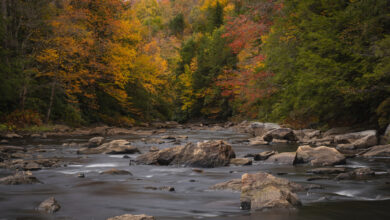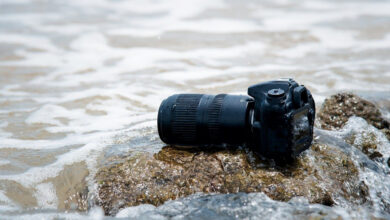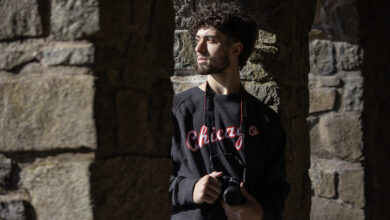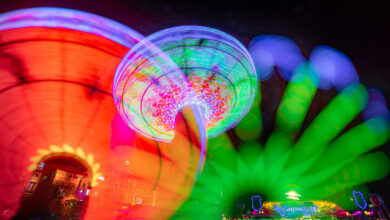We Go Hands on With The Sony a9 III: The Hype Is Real
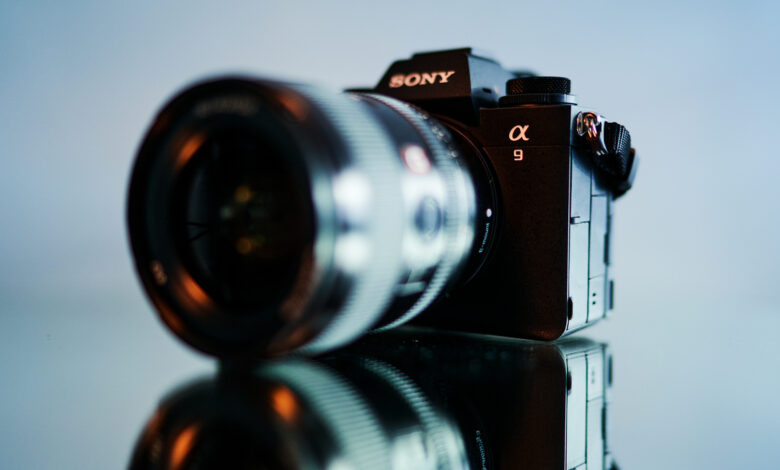
I get it, on almost every camera launch, things get sensationalized and hyped more than they probably should. But in this case, the hype is real.
With the launch of the Sony a9 III, we got something that I have been waiting and hoping to get for years. Anytime someone asks me what I would like to see in a future camera or what my dream camera would be, having a global shutter has always been at the top of the list. Now that it’s here, I’m happy to report that this technology unlocks an entirely new world of possibilities.

For those who don’t know, traditional electronic shutters read data from the sensor line by line from one end of the sensor to the other. This is why you can get weird distortions when taking photos or videos of moving subjects or when the camera is moving. Essentially, by the time the sensor data is read from one end to the other, the subject has moved. This is also why you can get that horrible banding when shooting in certain lighting conditions. Cameras like the Sony a9 and Sony a1 have made this a lot better by having significantly faster speeds when reading the sensor data, but it wasn’t perfect. With a global shutter, though, all the data is read from the sensor at the same instant. So, no more distortions and no more banding. And while this is amazing to have, this isn’t the true reason why I am personally excited about a global shutter.

When it comes to things like flash photography, There has always been a limitation for what shutter speeds you can use flash. In fact, for most cameras, you can’t even use the electronic shutter at all with flash. And with traditional mechanical shutters, the fastest flash sync speed I am personally aware of is 1/400th of a second, found on the Sony a1. But now with a global shutter, not only can we use flash with the electronic shutter, we can now use flash at any shutter speed. The new global shutter on the Sony a9 III even gives us access to much faster shutter speeds than we have ever seen from a full frame camera. So, not only can you now shoot at shutter speeds as fast as 1/80,000 s, you can also sync your flash at these speeds. But a weird thing with this feature is that it’s limited to f/1.8 or higher, so if you try to shoot at f/1.4 or lower, you will be limited to 1/16,000 s, which is still more than usable. But I’m not certain as to why this is even a limitation.
What this does is allow you to have significantly more control in bright sunlight when using flash. Normally, to shoot at higher shutter speeds, you would have to resort to things like ND filters, higher apertures, or high-speed sync, which eats up a ton of power and thus requires you to use bigger more powerful lights to combat the bright sun. But now, we can control the sun with a faster shutter speed while also being able to take advantage of a flash’s peak power. So, for example, the below image was taken at 1/80,000 s, f/1.8, and ISO 125. In these settings, I’m drastically reducing the light from the sun. Normally, to light my subject, I would need a pretty powerful light. But with a global shutter, I could light my subject with a small Sony F46RM hotshoe flash. Now obviously, this is an extreme case and I wouldn’t necessarily want my ambient this dark. But it shows the true potential you can get with even a small flash. You see the small hotspot in the top right? That’s the actual sun!

This means that lighting kits will be able to become significantly smaller and lighter, while also having more versatility. So, what’s the catch? When using any Sony-branded flash, there is no catch. Everything just works as you would expect. But when you start to use other lighting brands, as of right now, you have to take some extra steps to get everything working. You see, when you take images at such high shutter speeds, that little sliver of time doesn’t always match up with the peak brightness of the light you are using. So, what you need to do is adjust the trigger timing to sync the shutter speed with the peak brightness of the light. And honestly, it’s not terrible to do. But it’s definitely an added hassle.

As it is now, what you have to do is take a photo, adjust the timing, then take another photo. You repeat this until you get to peak brightness and then start to see the brightness drop back off. You then know where the peak is, and you’re good to go. The problem is that adjustment to the shutter speed or the flash power can affect this timing, causing you to have to start the process all over again. But it’s important to mention that I was also testing a beta version of the camera, and after a few conversations about this process with Sony reps, I’m hopeful that this process will get streamlined before the cameras start shipping. The way I feel this should work is that you could press a button or menu item to start a trigger measurement, then the camera takes a 120 fps burst and can then use that sequence to figure out which image has the highest brightness and then auto-adjust the timing. You would still need access to manually adjust the timing for instances where the auto adjustment doesn’t work, but I think this process would speed things up as well as let you not fill up your memory card by repeatedly taking test images. But, even if this process doesn’t change at all, I still think the hassle is worth the ability this unlocks.

There is another feature that you get with the global shutter that certain photographers will love to have access to. With this new shutter, you can now shoot full raw files at 120 frames per second. And I was actually impressed with how Sony implemented this feature. Like most cameras, you have a set of drive modes for choosing the frames per second. So ,you can be casually shooting at 30 fps with the option to have a boost button. By default, this is the new C5 button on the front of the camera, and as you hold this button down along with the shutter, you can get the full 120 fps. Let the button go, and you go back to your previously chosen frame rate. You can also set what you want this boost setting to be. So, maybe you want to shoot at 10 fps and have the boost get you to 60 fps. The choice is yours.

Another amazing feature that utilizes this tech is called pre-capture. You have a setting in the camera that will cause the camera to start capturing images the instant you half-press the shutter or engage autofocus. Then, when you actually press the shutter, you get the image you pressed the shutter for as well as the previously captured images. You also get to define how much time before the shutter press you’d like to have recorded, from .05 seconds all the way to a full second. So, if you are trying to capture the peak of a moment, you no longer have to worry about just barely missing it. You press the shutter, and you can then get 120 fps of the last second. This is game-changing for sports and wildlife photographers, as well as photojournalists and anyone who really focuses on capturing a definitive moment.

Outside of the global shutter, the Sony a9 III also has everything else you’d expect from a flagship model. You have some of the best video features on offer, like 4K 120p with no sensor crop. The amazing dynamic stabilization that gives you gimbal-quality stabilization is just built into the camera. Even the ergonomics are improved, and you have more options for customizations. You even get the amazing flip/tilt screen found only on the Sony a7R V. So, while the global shutter is sort of an eclipsing feature, don’t think that’s all this setup has to offer.

What I Liked
- Insane flash sync speeds
- Boost button for 120 fps raw
- Pre-capture to take images before you hit the shutter
What I Didn’t Like
- Syncing off-brand flashes is a little cumbersome (hopefully resolved before shipments start)
- The full 1/80,000 s shutter is limited to f/1.8 or higher
For me and the type of work I do, it feels like this is the perfect camera that was purpose-built for me. While I know some users wanted to see a higher megapixel count, I think 24 megapixels is the sweet spot for almost everything I do. Though I still have questions and testing I’d like to do in terms of ISO and dynamic range, even if it’s simply as good as the five-year-old Sony a9, I’d be more than happy. And although the high shutter speed flash syncing feels cumbersome at the moment, I believe it will quickly be sorted out. Aside from that, I had a really hard time finding anything I didn’t like. But I’m also excited to get more than a day with the camera to test things in more real-world use. I’m also excited to test pairing the new global shutter flash speeds with more powerful lights to really see what’s creatively possible. You can preorder the Sony a9 III here.

